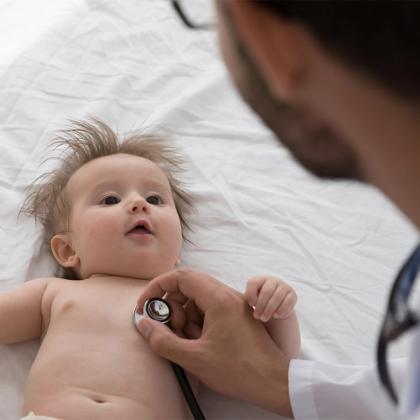In this episode, Dr Hannah Rosa is joined by Dr Shan, a GP colleague and father to Oscar, an 8-week-old baby. Together, they go through the 6-week baby check, while discussing the recently updated guidance from Public Health England. They also explore the key role that the examination plays in screening for a variety of physical conditions, which, if picked up early, can make a huge difference to the future health of a child.
Key references
- Public Health England. Newborn and infant physical examination (NIPE) screening programme handbook. 28 April 2021.
- Gilworth G, et al. Parents’ expectations and experiences of the 6-week baby check: a qualitative study in primary care. BJGP Open. 2020 Dec;4(5):bjgpopen20X101110. doi: 10.3399/bjgpopen20X101110.
- NHS, Great Ormond Street Hospital for Children. Haemangiomas. April 2016.
- NHS, Great Ormond Street Hospital for Children. Port wine stains. July 2018.
- Causes, childhood cataracts. 13 April 2022.
- Foetal alcohol spectrum disorder. 4 April 2023.
- NICE, BNF. Fluoxetine. Accessed: 10 July 2023.
- NICE, BNF. Sertraline. Accessed: 10 July 2023.
- Touzopoulos, P and Markeas, N.G. Asymmetrical thigh creases or isolated thigh crease may be a false positive sign with low predictive value in the diagnosis of developmental dysplasia of the hip in infants: a prospective cohort study of 117 patients. Eur J Orthop Surg Traumatol. 2020 Jan;30(1):133–138. doi: 10.1007/s00590-019-02529-w.
- GP Notebook. Barlow’s sign. January 2018.
- GP Notebook. Ortolani’s sign. January 2018.
- NHS, E-learning for healthcare. NHS newborn infant physical examination (NIPE) programme. Accessed: 10 July 2023.
Key take-home points
- The NHS infant physical screening examination is carried out within primary care when babies are between 6–8 weeks of age.
- It plays a vital role in detecting conditions such as congenital cataracts, congenital heart diseases, dislocated or dislocatable hips and undescended testes.
- It is therefore vital that everybody who carries out this examination is familiar, not only with how to do it, but also with the risk factors that make these conditions more likely and with the knowledge of when to refer to specialists for further support.
Create an account to add page annotations
Annotations allow you to add information to this page that would be handy to have on hand during a consultation. E.g. a website or number. This information will always show when you visit this page.
